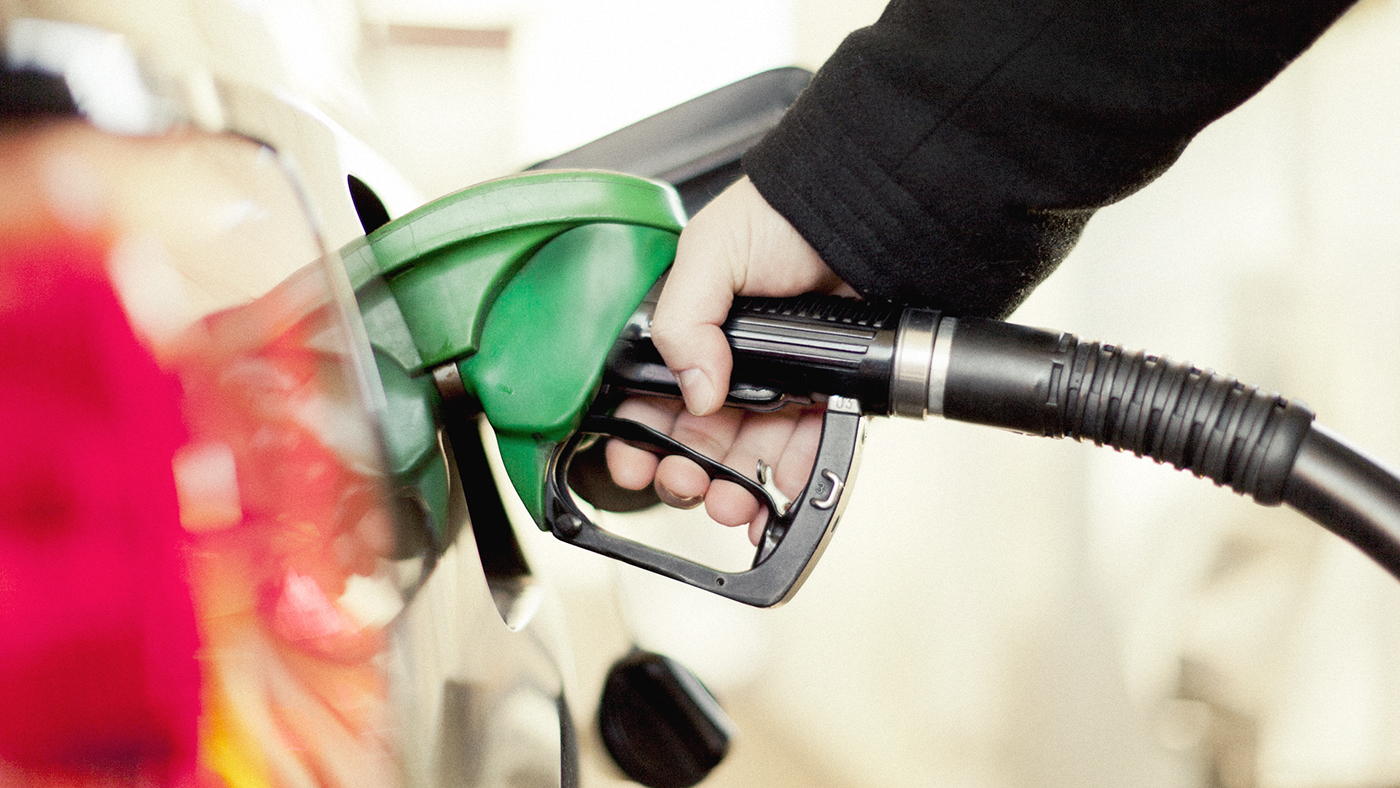How to save on gas prices


Once again, gas prices are on the rise. After hitting a "low point of $3.20 per gallon" in December 2022, Kiplinger reported that after multiple jumps in cost, "the national average cost for a regular gallon of gasoline is $3.71" as of July 2023.
Quoting CNN, Kiplinger said that these increases are due to "a combination of mounting supply cuts by OPEC and Russia, extreme heat that has sidelined oil refineries and optimism about the health of the world economy." While consumers might not have much control over these factors, there are some steps that you can take to pay less next time you fill up.
1. Get strategic with your trips out
One way to save money at the pump is to get more strategic about your driving. Kiplinger suggests "[g]rouping your trips," as this translates to "fewer miles driven." But what if your errands are dragging you in a bunch of different directions? Per Kiplinger, "all non-electric cars use more fuel when the engine is cold," which means that "the fewer times you need to bring the engine up to temperature, the better."
The Week
Escape your echo chamber. Get the facts behind the news, plus analysis from multiple perspectives.

Sign up for The Week's Free Newsletters
From our morning news briefing to a weekly Good News Newsletter, get the best of The Week delivered directly to your inbox.
From our morning news briefing to a weekly Good News Newsletter, get the best of The Week delivered directly to your inbox.
Other tips Money offers for getting savvier about your trips out of the house include searching for "a more fuel-efficient route," considering carpooling or an alternative mode of transportation like a bike or public transportation, or aiming to commute "during non-rush hour times."
2. Unload any excess weight
Hauling around any extra weight in or on your car can decrease your vehicle's fuel efficiency. Citing the EPA, Kiplinger reported "1% in fuel mileage reduction per 100 pounds." This means that all of that stuff you're hauling around — whether golf clubs, a case of water, or even that third row of seats you never use — is making a difference.
Other culprits you might have overlooked are your roof rack and carrier. Nerdwallet explains that "[w]hile it might give you more space for those long trips, a roof rack and carrier combo will eat up your gas mileage." In fact, citing a 2020 Consumer Reports study, Nerdwallet reported that "a roof rack with a carrier dropped a sedan's fuel economy by 19% and an SUV's fuel economy by 13%."
3. Take advantage of rewards programs
There are a plethora of fuel-savings rewards programs out there, and you'd be remiss not to take advantage of at least one of them. For instance, you might use a gas rewards credit card to earn cash back at the pump, or you could see if your local grocery store offers its own rewards program. Per Money, "[s]everal major grocery chains partner with gas stations to offer members a nice discount at the pump, frequently 10 cents or more off per gallon."
A free daily email with the biggest news stories of the day – and the best features from TheWeek.com
4. Comparison-shop before filling up
If you can plan ahead before filling up (rather than waiting until you're in dire need), you might also end up saving. For instance, Nerdwallet notes that there are a number of gas price apps that allow you to "compare gas prices in an area to show you which stations have the lowest prices." Per Nerdwallet, a number of these apps are free, and they "let you search by your specific location or a city or ZIP code, as well as criteria like type of fuel and payment method."
Beyond paying attention to where you fill up, it can also help to get strategic about when you do so. According to Car and Driver, "[g]as prices are usually calculated based on demand, so filling up at the gas station on Monday or Tuesday is likely to get you the best price." The worst day to fill up, per Car and Driver, is Thursday, "as people prepare for their upcoming weekend plans."
5. Don't put the pedal to the metal
Another way to save on fuel efficiency is to slow down. As Money points out, "[a]biding by the speed limit, accelerating slowly and coasting more are not only safer ways to drive, but they're also extremely cost-efficient driving habits."
If you have a need for speed, consider these numbers reported by Money backing it up: "According to FuelEconomy.gov, these safe-driving methods can boost your fuel efficiency by up to 40% depending on the speed and how frequently you stop and go. At highway speeds, your fuel efficiency jumps 15% to 30%, whereas in stop-and-go traffic, it ranges widely between 10% to 40%."
At the end of the day, that can mean "a whopping savings rate of 30 cents to $1.40 per gallon," per Money — and that's if fuel prices are around $3.50. If fuel prices are even higher, which is where they're pushing, you could even save more.
6. Keep up with routine maintenance
While it might seem like a drag to take your car in for maintenance, not doing so can be a drag on your vehicle's performance — and thus its gas mileage. Car and Driver explained that "[c]ertain preventative maintenance tasks" like "motor oil changes, tire rotations, and air conditioning recharges" — as well as "taking your car in for immediate repairs when necessary" — all can help with gas mileage.
As another trick, CNBC Make It emphasized the importance of keeping your tires properly inflated. It reports that "[u]nder-inflated tires will lower gas mileage by about 0.2% for every 1 PSI drop below your optimal PSI rating."
7. Avoid idling
According to Kiplinger, "[y]our car wastes fuel after about 7-10 seconds of idling." And, according to CNBC Make It, "[w]aiting at a red light takes an average of about 45 to 120 seconds." This can translate to a lot of fuel lost.
Thankfully, newer cars have an automatic shut-off feature designed to save gas. Worried about the effects of turning off and restarting your engine numerous times of day? Per CNBC Make It, "newer cars also have heavy duty starters that can handle dozens of starts in a day."
With older cars that lack start/stop, however, CNBC Make It says it's not typically recommended" to turn off your car at short stops like a red light. That said, "if you're otherwise parked safely for more than 10 seconds, consider turning off the engine to save on gas: Idling can cost you up to half a gallon of fuel per hour, depending on engine size and air conditioner use," says CNBC Make It.
Becca Stanek has worked as an editor and writer in the personal finance space since 2017. She has previously served as the managing editor for investing and savings content at LendingTree, an editor at SmartAsset and a staff writer for The Week. This article is in part based on information first published on The Week's sister site, Kiplinger.com.
New tax rules for 2023: Download your free issue of The Kiplinger Tax Letter today. No information is required from you.
Becca Stanek has worked as an editor and writer in the personal finance space since 2017. She previously served as a deputy editor and later a managing editor overseeing investing and savings content at LendingTree and as an editor at the financial startup SmartAsset, where she focused on retirement- and financial-adviser-related content. Before that, Becca was a staff writer at The Week, primarily contributing to Speed Reads.
-
 Political cartoons for December 13
Political cartoons for December 13Cartoons Saturday's political cartoons include saving healthcare, the affordability crisis, and more
-
 Farage’s £9m windfall: will it smooth his path to power?
Farage’s £9m windfall: will it smooth his path to power?In Depth The record donation has come amidst rumours of collaboration with the Conservatives and allegations of racism in Farage's school days
-
 The issue dividing Israel: ultra-Orthodox draft dodgers
The issue dividing Israel: ultra-Orthodox draft dodgersIn the Spotlight A new bill has solidified the community’s ‘draft evasion’ stance, with this issue becoming the country’s ‘greatest internal security threat’
